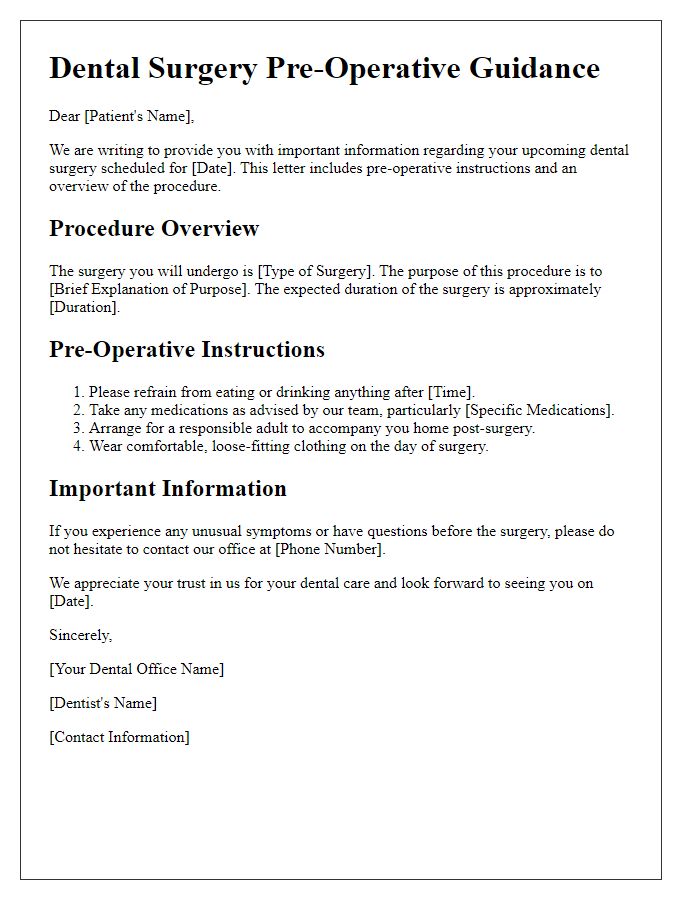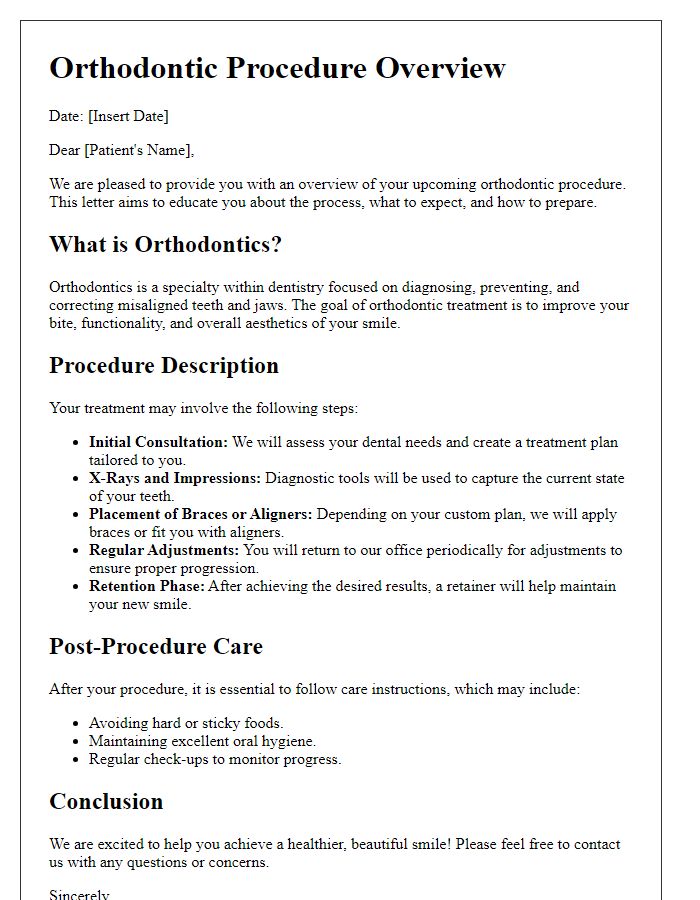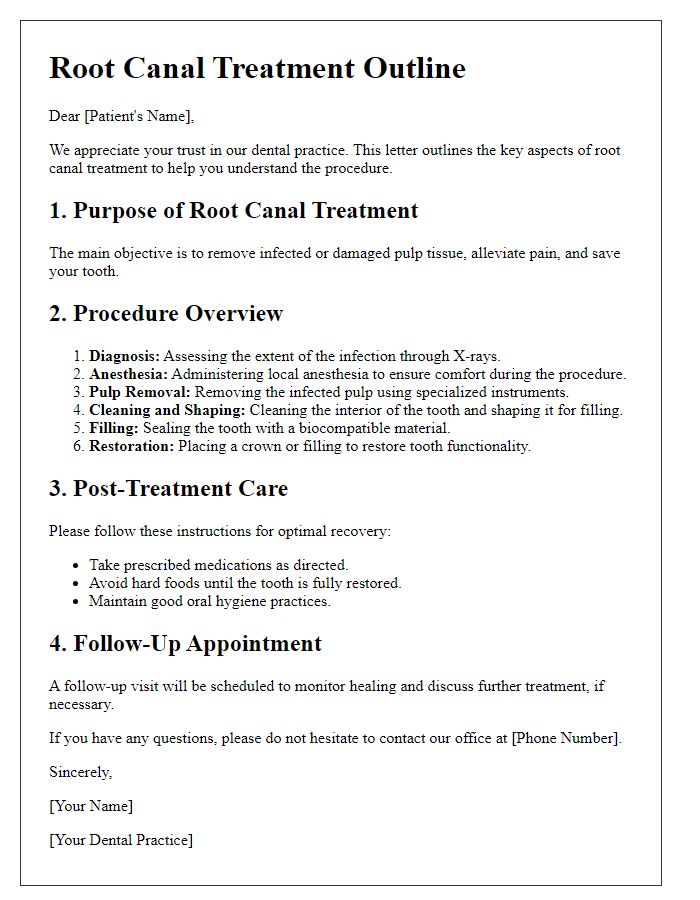Have you ever found yourself anxious about an upcoming dental procedure? You're not alone! Many people experience uncertainty when it comes to dental treatments, but understanding the process can make all the difference. In this article, we'll break down what to expect before, during, and after your dental procedure, so you can feel more at ease and informedâread on to discover more!

Patient's personal information
Obtaining a detailed understanding of a patient's dental procedure is vital for ensuring clarity and comfort throughout the process. Patients must provide personal information such as full name, date of birth, and contact details for effective communication. Medical history, including allergies and previous dental treatments, is critical in assessing risks associated with the procedure. Furthermore, insurance information assists in planning financial aspects linked to treatment costs, which vary based on the specific procedures like root canals or crowns. Understanding the patient's current dental condition, including x-rays, also plays an essential role in formulating an appropriate treatment plan tailored to individual needs.
Detailed description of the procedure
Dental procedures, such as root canal therapy, aim to treat infected or damaged tooth pulp, ultimately preserving the natural tooth structure. This intricate process often involves several steps. Initially, a dentist in a licensed clinic (such as a local dental office in San Francisco) administers anesthesia to minimize pain during the procedure. Subsequently, the dentist makes an access hole in the crown of the tooth, typically involving molars, to reach the pulp chamber. Using specialized tools, the dentist carefully removes the infected pulp tissue and cleans the interior of the tooth. The next step involves shaping the root canals to facilitate filling and sealing, typically with a biocompatible material called gutta-percha. Following this, the access point is sealed with a temporary or permanent restoration. Post-procedure, patients are advised to manage any discomfort with over-the-counter pain relievers and to maintain follow-up appointments to ensure the treatment's success.
Potential risks and benefits
Dental procedures carry various potential risks and benefits that patients should understand before undergoing treatment. Benefits of procedures like root canals or dental implants include pain relief, prevention of further dental complications, and restoration of oral function and aesthetics, improving overall quality of life. For instance, root canals can save infected teeth, while dental implants provide a durable solution for missing teeth, with success rates exceeding 95% in healthy individuals. However, risks like infection, nerve damage, and prolonged discomfort can arise from these procedures. Anesthesia reactions and complications from sedation are also possibilities, especially for individuals with underlying health conditions. Patients should communicate openly with their dentist about medical history and preferences to ensure informed decision-making regarding their dental care.
Pre- and post-procedure instructions
Pre-procedure instructions for dental procedures often include recommendations such as fasting for at least six hours for sedation dentistry. Patients should refrain from smoking or consuming alcohol for 24 hours prior to their appointment to ensure optimal healing. Post-procedure care is crucial. Patients may be advised to rest for the remainder of the day, apply ice packs to manage swelling, and avoid hard or crunchy foods for at least 48 hours. Pain management might involve over-the-counter analgesics like ibuprofen or acetaminophen, following dentist-prescribed dosages. Regular follow-up appointments are essential for monitoring healing, typically scheduled for one week after the procedure.
Contact information for further inquiries
Dental procedures such as root canals or teeth whitening require detailed explanations to ensure patients understand the process and expected outcomes. For instance, a root canal involves the removal of infected pulp from the tooth's interior, followed by cleaning, shaping, and sealing the space to prevent reinfection. This procedure typically takes 1 to 2 hours, with the dentist utilizing anesthesia to minimize discomfort. Post-procedure care instructions emphasize the importance of avoiding hard foods for a few days and the potential use of over-the-counter pain relievers for any residual discomfort. Additionally, if patients have questions or need further clarification about their dental procedures, they can contact the dental office at (555) 123-4567, where trained staff members are available to provide guidance.
Letter Template For Dental Procedure Explanation Samples
Letter template of dental surgery explanation for pre-operative guidance

Letter template of orthodontic procedure description for patient education

Letter template of teeth whitening procedure clarification for inquiries

Letter template of dental implant procedure details for prospective patients










Comments